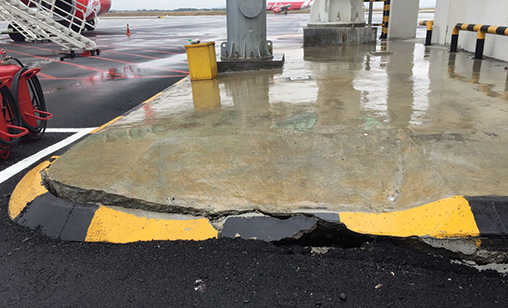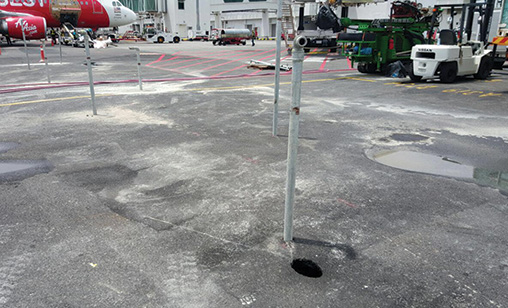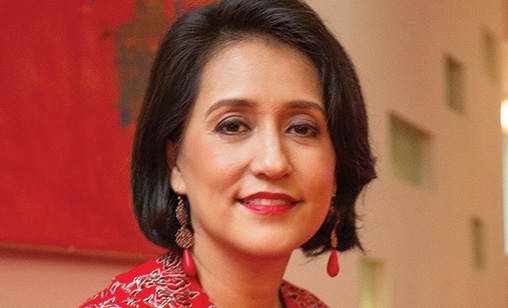News Backgrounder
Malaysia’s biggest airline group bumps up against monopoly operator
When is a low-cost airport terminal not a low-cost airport terminal? It’s a question that is pre-occupying the AirAsia Group and its supporters as they lock horns with the country’s airport authority about the branding of Kuala Lumpur’s budget facility.
September 1st 2016
AirAsia Group chief executive, Tony Fernandes, and the head of the airline’s Malaysia arm, Aireen Omar, have no doubts about the purpose of Kuala Lumpur International Airport’s (KLIA) second terminal. Read More »
It is a low-cost terminal and they are calling it Low-Cost Carrier Terminal Kuala Lumpur, or LCCT2. They are spending $5 million on a marketing campaign to promote the facility.
 |
 |
 |
| Poor maintenance KLIA2 (or LCCT2) Malaysia |
But the airport’s operator, Malaysia Airports Holdings (MAHB) does not like the idea and is threatening legal action to preserve its right to brand the LCC terminal as KLIA2.
The AirAsia Group’s proposed name change, said MAHB managing director, Badlisham Ghazali, is confusing passengers. Misled by LCC branding, they are heading to the airport’s now closed former low-cost terminal.
“Why create the fuss and confusion? The brand stays. I hope (Malaysia’s) Transport Minister, Liow Tiong Lai, will inform AirAsia. We will see what happens next,” he said in July.
After a meeting with the Transport Minister and Malaysia’s Director General of Civil Aviation, Azharuddin Abdul Rahman, Fernandes appeared to be in a conciliatory mood. He tweeted the discussions were “very good” and indicated the government had accepted the second terminal was a low-cost facility.
“The important issue is not the name but that it’s promoted inside the terminal and to the world that KLIA has a low-cost hub with low fares,” he said. He added he was confident that ultimately Liow would be able to find a good “win-win” solution for both AirAsia and MAHB.
“The goal is to get more of Asean, Asia and the world to use our low-cost hub. One million people have travelled through KLIA2 so far this year. We want to grow that. (This) will be great for the economy.”
But Liow threw a spanner in the works. He said KLIA2 should not undergo a name change despite the fact that at the AirAsia Group it would definitely be known as LCCT2.
The sequence of events that led to this stand-off is one of the region’s strangest aviation disagreements of the year. Unfortunately, it has emerged at a time when Fernandes was already at odds with the MAHB about its planned increases in airport fees and charges at the second terminal.
At Britain’s Farnborough Air Show in July, he posted a Facebook message that said the MAHB “can’t charge passengers for its grandiose schemes”. He labelled KLIA2, in its current state, as a “Frankenstein terminal” that is “neither premium nor low-cost”.
Fernandes is most upset by the fact that AirAsia Group airlines make up 98% of the traffic at KLIA2 and therefore are MAHB’s biggest customer at the terminal. Yet, said Fernandes, the airport authority was not willing to consider AirAsia’s requirement for a basic low-cost terminal that would reduce the airline group’s operating costs.
AirAsia Berhad CEO, Aireen Omar, wrote to Liow to seek the government’s support to operate KLIA2/LCCT2 as a hub low-cost terminal that could make Kuala Lumpur the Dubai of the East.
“We wish to start addressing the airport terminal as LCCT2, which is the true identity of the terminal. But the MAHB has refused to admit the airport is meant for low-cost carriers,” she said.
Omar said the MAHB had stated the KLIA Main Terminal Building (MTB) and KLIA2 are planned as an integrated hub, but there was no evidence to support the argument. “An integrated hub should include seamless connectivity between terminals that encourages passengers to interlink and stimulate travel on both full-service and low-cost carriers,” she said.
“The lack of airside trains and landside buses to connect KLIA to KLIA2 clearly showed the terminals are not part of an integrated hub. Passengers are charged RM2 one way for using the only train connecting the two terminals and the train operates on a sparse schedule.”
The low-cost carrier group wants the MAHB to focus on a dual-hub strategy. The KLIA MTB could be led by national carrier, Malaysia Airlines Berhad, and supported by the oneworld alliance, while LCCT2 could be positioned as the region’s low-cost carrier hub.
 |
| 'We wish to start addressing the airport terminal as LCCT2, which is the true identity of the terminal. But the MAHB has refused to admit the airport is meant for low-cost carriers' |
| Aireen Omar CEO and executive director AirAsia Berhad |
“AirAsia’s fly-thru traffic has grown by almost 50% every quarter, with more and more travellers flying into Kuala Lumpur and using it as a transit hub. If MAHB can admit to the importance of LCCT2 as a low-cost carrier hub, we can work together to strengthen the position of Kuala Lumpur and reclaim the title of Asia’s largest LCC hub from Bangkok’s Don Mueang International Airport,” AirAsia said.
MAHB said KLIA2 is neither an independent airport nor a hub. It is Kuala Lumpur International Airport’s (KLIA) second terminal and was a crucial part of the KLIA hub.
“Although KLIA2 is mainly used by low-cost carriers, it is designed to cater to all types of airlines as it supports the overall KLIA capacity,” the airport operator said. MAHB added KLIA2 is the registered name of the terminal under the International Air Transport Association (IATA). Calling it by another name would be misleading for passengers and the public. AirAsia countered when it said both terminals at KLIA would bear the IATA code of KUL.
MAHB, which manages and operates 39 airports in Malaysia and one international airport in Istanbul, Turkey, said its five-year business plan was aimed at positioning KLIA as an integrated hub that would provide seamless connectivity between full service, hybrid and low-cost airlines.
“Successful hubs are measured by the extent of their international connectivity. It is evident this could only be achieved by leveraging on the full service carrier network and alliances as well,” it said.